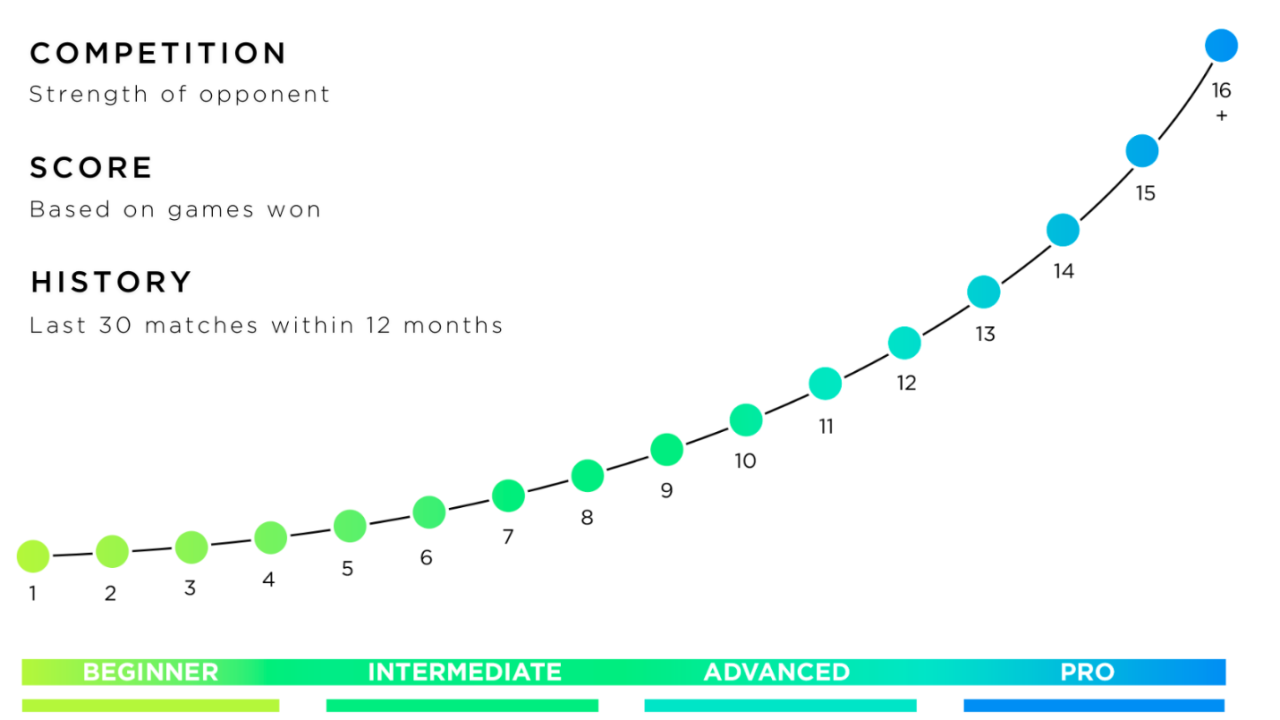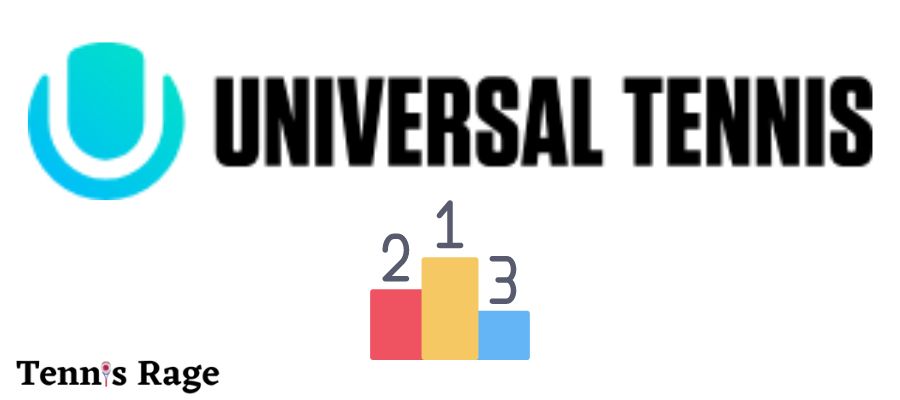Universal Tennis Rating News: Transforming the Game is a revolutionary system that’s changing the way we view and participate in tennis. UTR, unlike traditional ranking systems like ATP and WTA, offers a comprehensive and objective way to assess a player’s skill level, regardless of age, location, or tournament experience.
The UTR system is based on a complex algorithm that analyzes match results, opponent strength, and other factors to generate a numerical rating that reflects a player’s true ability. This rating is then used for a wide range of purposes, including tournament seeding, player recruitment, and even college scholarship opportunities.
Universal Tennis Rating (UTR) System Explained

The Universal Tennis Rating (UTR) system is a revolutionary approach to tennis rankings, aiming to provide a more accurate and comprehensive assessment of a player’s skill level. It differs significantly from traditional ranking systems like the ATP and WTA, offering a dynamic and globally unified platform for players of all levels.
How the UTR System Works
The UTR system relies on a complex algorithm that analyzes a player’s match results against other players with known UTR ratings. Each match contributes to a player’s UTR, with the system adjusting the rating based on the strength of the opponent, the score of the match, and other factors like surface and tournament level.
Difference Between UTR and Traditional Ranking Systems
Unlike traditional ranking systems like ATP and WTA, which are primarily based on tournament results and points accumulated, the UTR system considers all matches, regardless of tournament status or level of competition. This makes the UTR a more inclusive and representative ranking system, as it reflects a player’s overall performance rather than just their performance in specific events.
UTR Rating Scale
The UTR rating scale ranges from 1 to 16, with higher ratings indicating higher skill levels. The scale is divided into several levels, each representing a specific range of skill. For instance, a player with a UTR rating of 10 is generally considered to be a competitive player, while a player with a UTR rating of 16 is considered to be a professional-level player.
Benefits of the UTR System
The UTR system offers numerous benefits for players, including:
- Accurate Assessment of Skill Level: The UTR system provides a more accurate and objective assessment of a player’s skill level compared to traditional ranking systems.
- Global Ranking System: The UTR system is a global ranking system, allowing players to compare their skills with other players worldwide.
- Matchmaking and Tournament Entry: The UTR system facilitates matchmaking and tournament entry by providing a common standard for evaluating player skill levels.
- Player Development: The UTR system provides players with a clear roadmap for improvement, as they can track their progress and identify areas for development.
The UTR system is a powerful tool for players of all levels, providing a more accurate and comprehensive assessment of their skill level, facilitating matchmaking and tournament entry, and offering a clear roadmap for improvement.
UTR in Different Tennis Formats
The Universal Tennis Rating (UTR) system is designed to be applicable across all tennis formats, including singles, doubles, and mixed doubles. While the core principles of UTR remain consistent, the system adapts to the unique dynamics of each format, taking into account factors like team composition, court positioning, and strategic considerations.
UTR in Singles, Doubles, and Mixed Doubles, Universal tennis rating news
UTR aims to provide a comprehensive and accurate rating system that reflects a player’s ability regardless of the format they are playing in. Here’s a breakdown of how UTR is calculated for each format:
Singles
- In singles, UTR is based solely on an individual player’s performance. Each match result is analyzed, considering factors like the opponent’s UTR, the score, and the match conditions. The UTR algorithm assigns points for wins and losses, with the magnitude of points awarded depending on the strength of the opponent and the match outcome.
Doubles
- Doubles introduce a layer of complexity, as the performance of two players is evaluated together. UTR considers the combined strength of the doubles team, factoring in the individual UTRs of both partners. The system also takes into account the relative contributions of each player within the team, based on their performance metrics like service points won, return points won, and net points won.
Mixed Doubles
- Mixed doubles further complicates the UTR calculation, as it involves both male and female players. The UTR system adjusts for the inherent differences in playing styles and skill levels between genders. The UTR algorithm considers the individual UTRs of both partners, taking into account the gender-specific adjustments to ensure fair and accurate ratings.
Challenges and Considerations for Calculating UTR in Different Formats
The following challenges and considerations are unique to each tennis format:
Singles
- Singles matches are highly individualistic, relying on a player’s ability to outmaneuver their opponent. The UTR system must accurately capture the nuances of individual skill, including factors like serve strength, return of serve, groundstrokes, volleys, and mental toughness.
Doubles
- Doubles matches require players to coordinate their strategies and effectively communicate on the court. The UTR system must account for the synergy between partners, considering factors like teamwork, court positioning, and communication.
Mixed Doubles
- Mixed doubles matches involve both male and female players, presenting unique challenges in terms of skill differences and strategic considerations. The UTR system must adjust for gender-specific playing styles and skill levels, ensuring that ratings accurately reflect the performance of both partners.
UTR Rating Distribution Across Different Tennis Formats
The following table shows the approximate UTR rating distribution across different tennis formats:
| Format | UTR Rating Range | Description |
|---|---|---|
| Singles | 1-16 | Beginner to Intermediate |
| Singles | 17-19 | Advanced Intermediate |
| Singles | 20-22 | Competitive |
| Singles | 23-26 | High-Level Competitive |
| Singles | 27+ | Elite |
| Doubles | 1-16 | Beginner to Intermediate |
| Doubles | 17-19 | Advanced Intermediate |
| Doubles | 20-22 | Competitive |
| Doubles | 23-26 | High-Level Competitive |
| Doubles | 27+ | Elite |
| Mixed Doubles | 1-16 | Beginner to Intermediate |
| Mixed Doubles | 17-19 | Advanced Intermediate |
| Mixed Doubles | 20-22 | Competitive |
| Mixed Doubles | 23-26 | High-Level Competitive |
| Mixed Doubles | 27+ | Elite |
UTR and Tournament Participation: Universal Tennis Rating News

The Universal Tennis Rating (UTR) system plays a crucial role in tournament participation, influencing player entry, seeding, and ultimately, their chances of success. It provides a standardized measure of a player’s ability, allowing for fair competition and efficient tournament organization.
UTR for Tournament Entry and Seeding
The UTR system is widely used for tournament entry and seeding. Tournaments often set minimum UTR requirements for participation in specific divisions or events. This ensures that players of similar abilities compete against each other, fostering fair competition and a more enjoyable experience for everyone. A higher UTR rating generally indicates a stronger player, leading to better seeding in tournaments. This means they are more likely to face opponents of similar skill level and have a better chance of advancing through the tournament.
UTR in Qualifying Events
UTR also plays a vital role in qualifying events, where players compete for a limited number of spots in the main draw of a tournament. Qualifying events often use UTR to determine the seeding and order of play, allowing players with higher UTR ratings to have a slight advantage in securing a spot in the main draw. This system helps ensure that the players with the highest potential are given the opportunity to showcase their skills on a larger stage.
UTR Requirements for Different Tournament Levels
The following table illustrates how UTR requirements vary depending on the level of the tournament:
| Tournament Level | UTR Requirement |
|---|---|
| Local/Club Level | No specific UTR requirement, but players are typically grouped by their UTR rating. |
| Regional/National Level | Minimum UTR requirements may be imposed for specific divisions or events. |
| Professional/International Level | Strict UTR requirements are in place, with higher ratings needed for entry into higher-level tournaments. |
UTR and Data Analytics
The Universal Tennis Rating (UTR) system, with its vast database of millions of player matches, provides a wealth of data for insightful analysis. This data can be leveraged to identify player strengths and weaknesses, track progress, and make informed decisions about training, competition, and strategy.
Analyzing Player Performance
UTR data offers a comprehensive view of a player’s performance across various aspects of the game. Coaches and players can use this data to identify specific areas where the player excels and where they might need improvement. For example, by analyzing the data, they can see:
- Serve effectiveness: UTR data can show the percentage of first serves in, the percentage of aces, and the average serve speed. This information can help players identify if their serve is a strength or a weakness and guide their training accordingly.
- Return of serve: UTR data can show how often a player returns a serve successfully, their percentage of return winners, and their average return speed. This information can help players identify their return of serve strengths and weaknesses and develop strategies to exploit their opponents’ weaknesses.
- Groundstrokes: UTR data can show a player’s groundstroke accuracy, consistency, and average groundstroke speed. This information can help players identify their dominant groundstroke, identify areas where they need to improve their technique, and develop strategies to exploit their opponents’ weaknesses.
- Volleys and overheads: UTR data can show a player’s volley and overhead accuracy, consistency, and average speed. This information can help players identify their strengths and weaknesses in these areas and develop strategies to improve their performance.
- Match play: UTR data can show a player’s match win percentage, average match time, and the number of sets won and lost. This information can help players identify their strengths and weaknesses in match play and develop strategies to improve their performance.
The Universal Tennis Rating system is more than just a ranking system; it’s a powerful tool that is reshaping the landscape of tennis. By providing a standardized and objective measure of player ability, UTR is fostering a more equitable and accessible playing field, empowering players of all levels to compete and progress in a meaningful way.
The Universal Tennis Rating (UTR) system continues to gain traction in the tennis world, providing a standardized ranking for players of all levels. But while the focus is on the court, it’s interesting to note how other sports, like football, are making headlines. For instance, you can check out the latest news on the Texas University football team here , and see how they’re faring on the gridiron.
The UTR system is a great tool for tennis players, but it’s always fascinating to see how other sports are evolving as well.
Universal Tennis Rating (UTR) news is a great resource for keeping up with the latest in the world of tennis. UTR provides a comprehensive ranking system that helps players of all levels track their progress and find suitable opponents. You can learn more about rankings and find out how to improve your game by visiting the UTR website. Similar to how UTR ranks tennis players, U.S.
News & World Report ranks the top public universities in the country, offering valuable insights for prospective students. Whether you’re looking to improve your tennis game or find the perfect university, reliable rankings can be a helpful guide.






